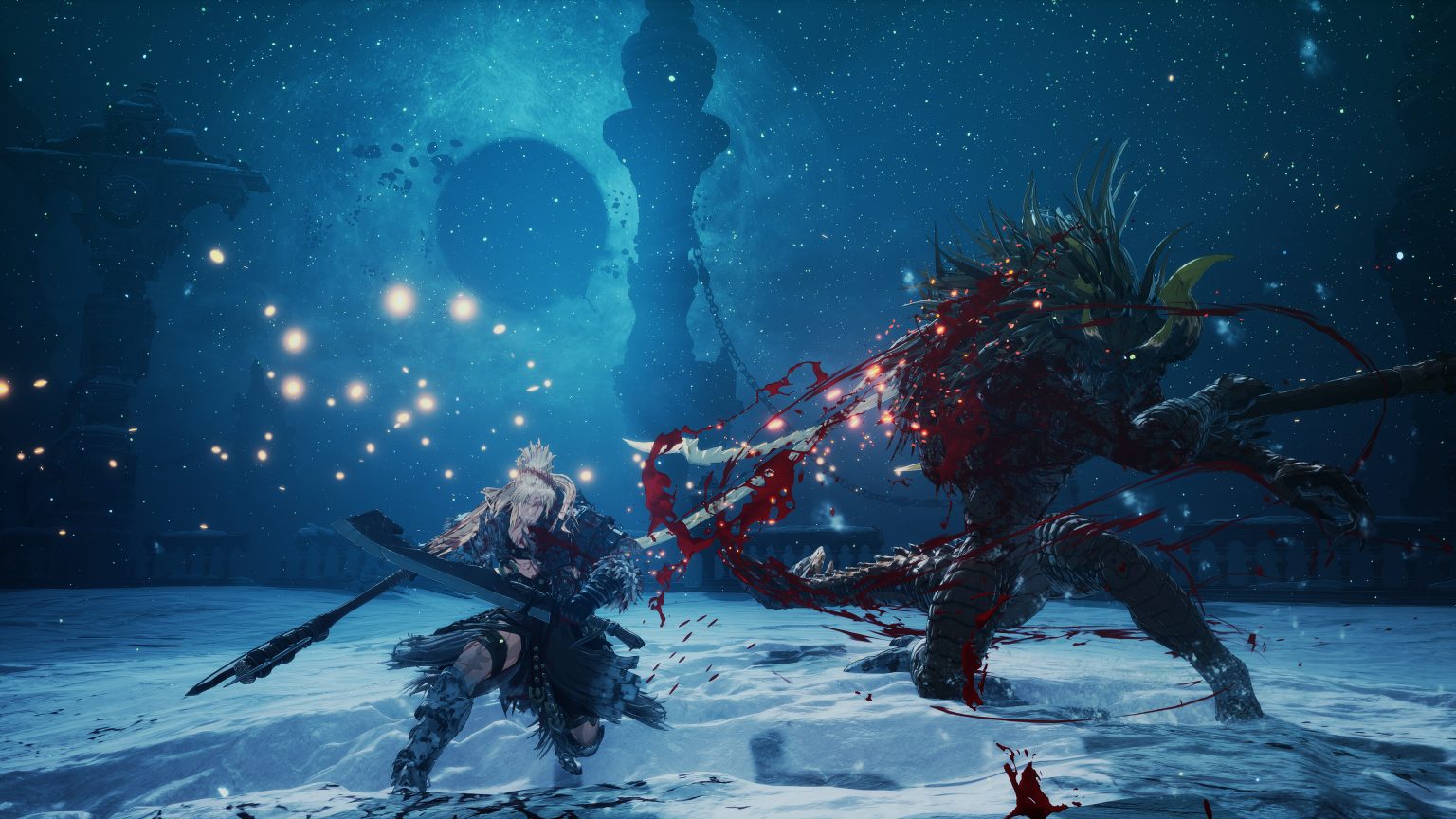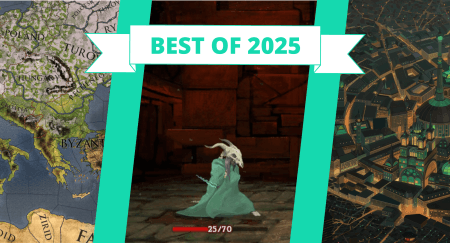The First Berserker: Khazan is one of the most rewarding games I’ve ever played.
“Rewarding” is a loaded term. It’s not the same as “fun,” necessarily, and it’s not the same as “good,” either. Does Khazan have flaws? As an entertainment product, absolutely; it would be remiss of me to pretend otherwise. The plot is largely lackluster and painfully generic, and the prominent characters don’t fare much better. Aesthetically, what you see is what you get. Moments of stylish flair are few and far between, with most of the game landing solidly in the realm of “the High Wall of Lothric but cel-shaded,” with little variance from that theme. There are quite a few systems integrated into Khazan with varying levels of obfuscation, some of which might have been unnecessary.
Yet, despite all of those caveats, I still believe that Khazan is a truly special experience. It’s a game that stands unabashedly on the stylistic influences of its forebears, but more than delivers a unique and powerful experience of its own accord. The First Berserker: Khazan demands mastery, yes, but it rewards it in kind.
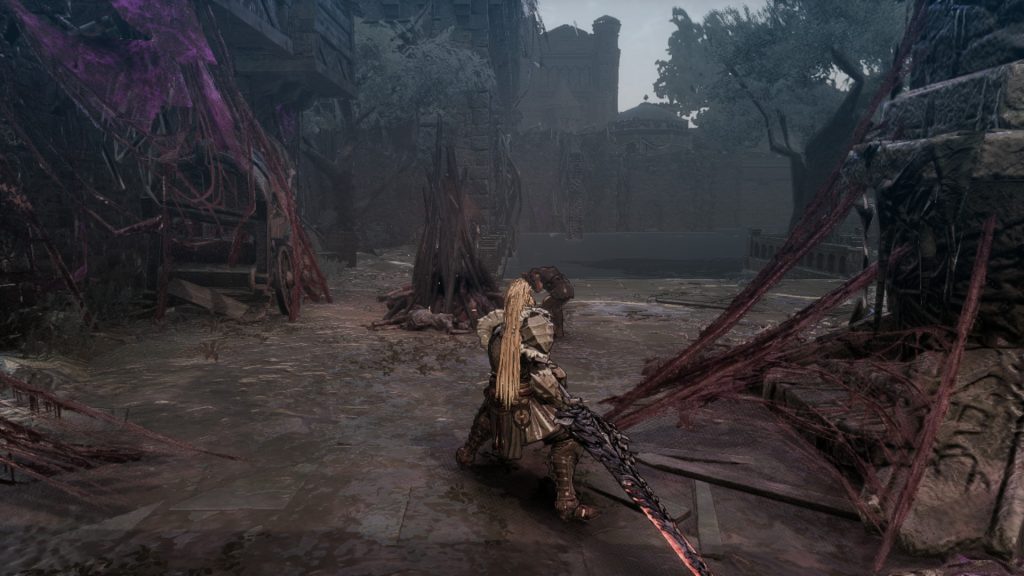
Rise, Khazan
You play as the titular Khazan, a great general of the Pell Los Empire who has been falsely accused of crimes against the empire and sentenced to death. A chance encounter and subsequent pact with a spirit of the underworld imbues Khazan with new powers, and he sets out to take revenge on those who have wronged him.
The First Berserker: Khazan employs a map-based mission structure. A central hub called the Crevice—an adequate reflavoring of the Archstones from Demon’s Souls—is used to access the game’s various missions, each of which features a large level with multiple bonfire-esque checkpoints that can be used as fast-travel points. Maps are littered with enemies that drop Lacrima, which are lost upon death but can be retrieved and are used to level up Khazan’s attributes. Missions contain a number of hidden collectibles and culminate in a boss fight. Nothing especially inventive here, but there’s no need to reinvent the wheel.
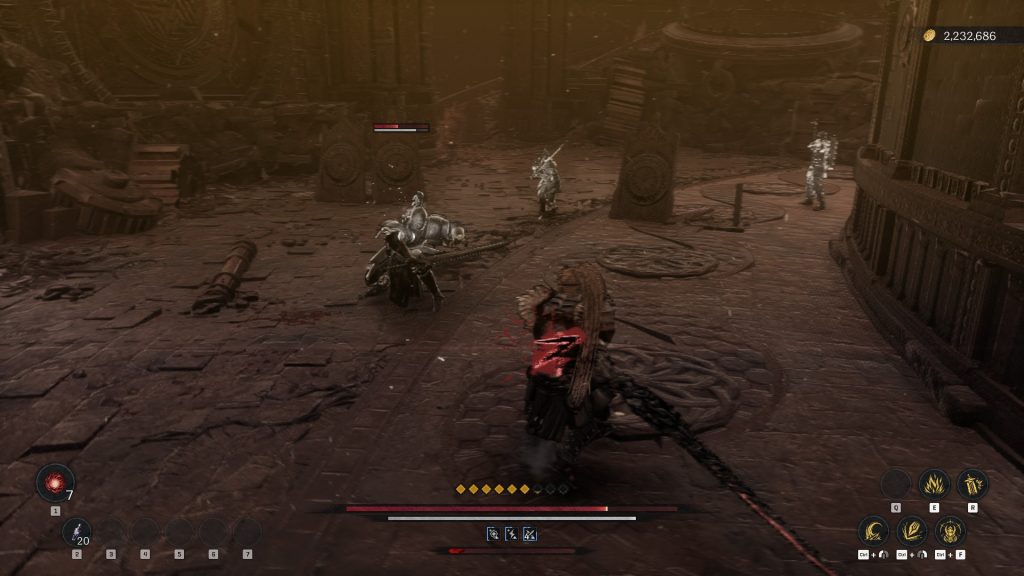
Let’s Talk Combat
Although the overarching structure of Khazan is derivative, the moment-to-moment combat is where the game shines. While the obvious, tempting comparison is to Sekiro: Shadows Die Twice, Khazan actually plays much more similarly to Nioh 2 with a healthy splash of 2024’s Stellar Blade. Parrying (referred to in-game as a Brink Guard) is powerful, but dodging is equally effective, with occasional scenarios that strictly favor one or the other intended to keep the player on their toes.
Although the overarching structure of Khazan is derivative, the moment-to-moment combat is where the game shines.
Khazan uses what I call a “prescriptive dodge”: a dodge that automatically applies a specific animation and large invincibility frame window to the player, along with a specific attack out of dodge roll (Brink Dodge). This differs from Dark Souls, where dodging grants i-frames but doesn’t actively reward the player outside of, well, dodging the attack. This combination of prescriptive dodging and powerful counterattacks gives Khazan a particular push-and-pull rhythm, especially against tough enemies.
In addition to the standard health and stamina bars, Khazan has access to a spirit gauge, which players fill by dealing damage, taking damage, Brink Guarding, or Brink Dodging. Various weapon skills can be equipped to a trigger + face button combination, for a total of up to six skills. The variety of weapon skills is notable, ranging widely in terms of startup time, hitbox size, speed, endlag, damage output, and situational usefulness. With the number of total available skills well outpacing the six available slots you have to equip them, I imagine different players will approach the game with significantly varied strategies and styles.
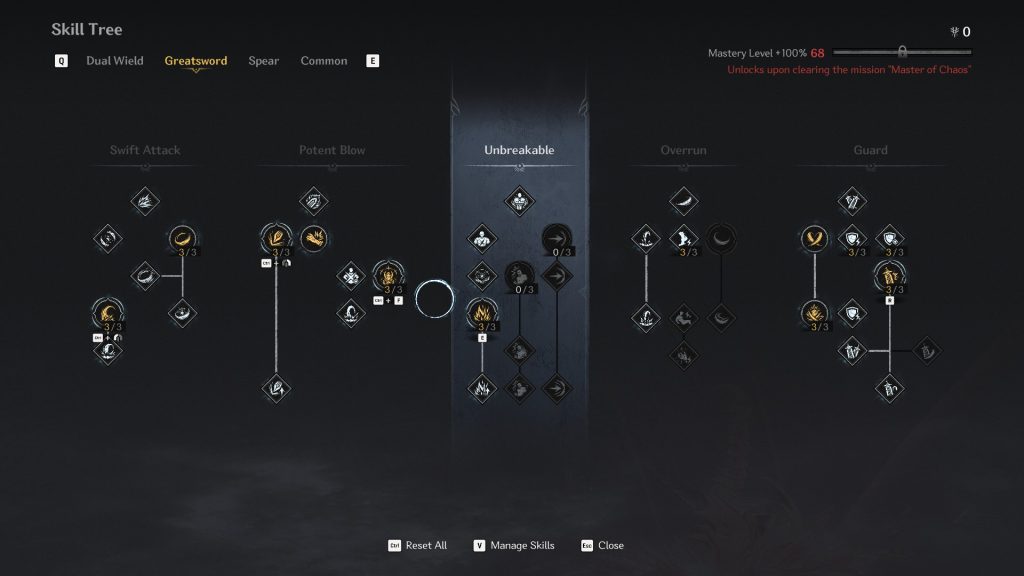
Weapons Befitting a Warrior
While there are 70+ weapons available in The First Berserker: Khazan, there are only three move sets, each tied to a distinct weapon category: dual-wield, spear, and greatsword. In the opening hours, my initial impressions were that three was a disappointingly low number—but those worries gradually melted away. Khazan is a challenging game, and between the base move sets having reasonably high variety and the multitude of weapon skills that can be equipped, after a few hours, I never found I was lacking weapon variety. The amount of mastery needed to succeed in this game requires commitment, and I ended up only exploring two of the three weapons (spear and greatsword) in my first playthrough. Even after 60 hours, it feels like I would need a whole second playthrough to say I’ve competently mastered a given weapon.
Combat in Khazan is a delicate dance of micromanaging your health, stamina, and spirit. Brink Guarding does not consume stamina and damages enemy posture, but a mistimed guard takes chunks out of your stamina, and getting hit while your stamina is empty stuns Khazan, which is extremely punishing. A mistimed Brink Dodge, meanwhile, consumes your stamina but can still allow you to avoid an attack via positioning. The latter is less punishing than a mistimed guard, though overall less efficient. Khazan also has its equivalent of Sekiro’s Mikiri Counter—enemy moves that flash with a danger symbol, requiring a swift parry via a separate input, as well as numerous command grabs that cannot be guarded, only dodged.
Attacking requires stamina, but weapon skills do not. This means that you can strategically employ offensive skills to push extra damage after exhausting your stamina or to gamble on staggering an enemy before they counterattack. Defensive skills, meanwhile, have larger windows than Brink Guarding but don’t always negate all the damage. Spirit is generated by dealing damage, Brink Guarding, and Brink Dodging (though there is an upgrade that allows for some spirit gain on damage being dealt to Khazan), which generally means that playing well is a positive feedback loop for the player.
Overall, I found the foundations of the combat in Khazan to be extraordinarily satisfying. The combination of these systems rewards aggression and precision. Any time I started to flail, panic, or overextend, I was punished; the more I began to internalize the amount of stamina required for specific moves, combos, and dodges, the more rewarding and fun the game became.
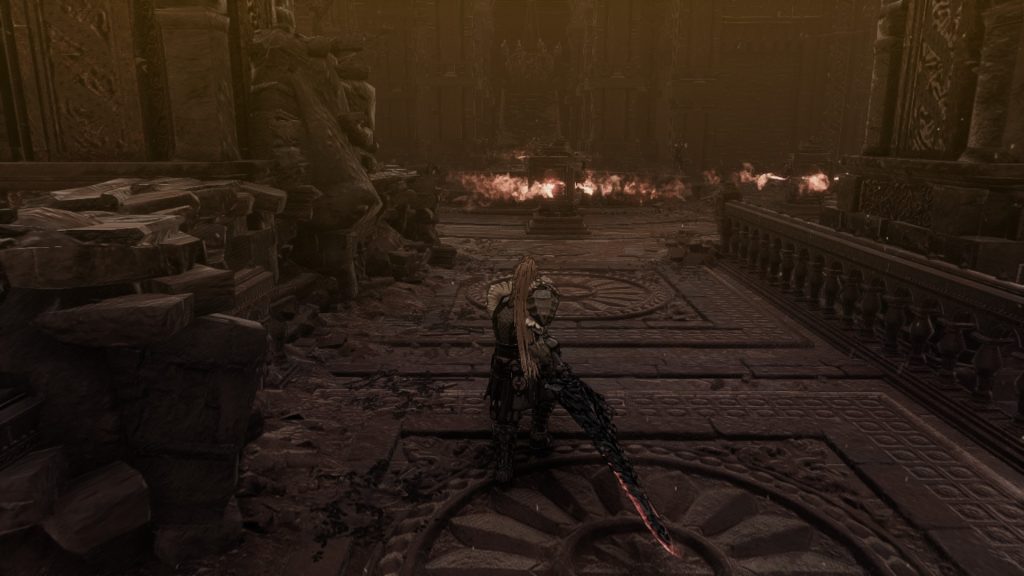
Cannon Fodder
Despite my earlier praise, I also have to admit that there are action games out there where the player input is more nuanced or rewarding than Khazan. (Nioh 2 is one such game; see my miscellaneous notes at the end for more context.) But combat isn’t just about what you do—it’s also about the enemy across from you. And it’s here that Khazan outdoes its peers.
You’ll probably spend about half your time in Khazan running through the map, engaging with smaller enemies, and the other half throwing yourself at bosses. Let’s start by discussing those lower-level enemies.
Combat isn’t just about what you do—it’s also about the enemy across from you. And it’s here that Khazan outdoes its peers.
The level design of missions never dips below adequate but also never rises to a level that I would deem interesting. Similarly to Lies of P, maps in Khazan largely use the “square loop with shortcut” form of design. This on its own is not ever especially inspiring, and discovering the numerous hidden collectibles in each level feels like legwork. Where Khazan does excel, specifically, is in its varied enemy placement and constricting room layouts.
Khazan almost never employs the Dark Souls II tactics of placing a large number of weak goons and mobs on the map that swarm you. When a game has enemies that are trivial to defeat alone, it makes the feeling of fighting them less of a thrill and more of a chore. Upping the difficulty by spawning an excessive amount of these enemies, then, constitutes less of a challenge and more of an irritation, producing slow and drawn-out encounters that often involve walking back and forth between areas, luring out enemies in small packs.
What Khazan does instead is deploy its enemies smartly. I’d estimate that the average difficulty of an enemy here is higher than your average FromSoftware game, with higher aggression, speed, and poise. As a trade-off, there are fewer enemies overall, but their placement is more challenging. Two tough enemies will prowl a hall with an archer in the back applying pressure, always forcing you to be cognizant. A lone enemy will seem like easy pickings, only for the noise of fighting to awaken sleeping enemies beyond, but the time it requires for these dragonkin to wake up is just enough for you to defeat the lone enemy before you, if you play it well.
Most enemies, even the weak ones, have some sort of twist to them that adds another spinning plate to the juggling exercise that is Khazan’s combat. There are spellcaster-type enemies that spawn a weak homing projectile on death, with just enough hitstun to disrupt you; zombies that sprint at you to inflict the damage-over-time Plague condition, and so on.
Missions are a constant string of these encounters, with enough variety in elevation, terrain, and enemy types to keep things fresh. Admittedly, the enemy variety probably isn’t as prolific as something like an Elden Ring; still, I found myself enjoying these parts of Khazan much more than the typical dungeon crawl in Elden Ring. The experience overall just felt a bit more handcrafted, well-tuned, and thoughtful than the average Soulslike experience.
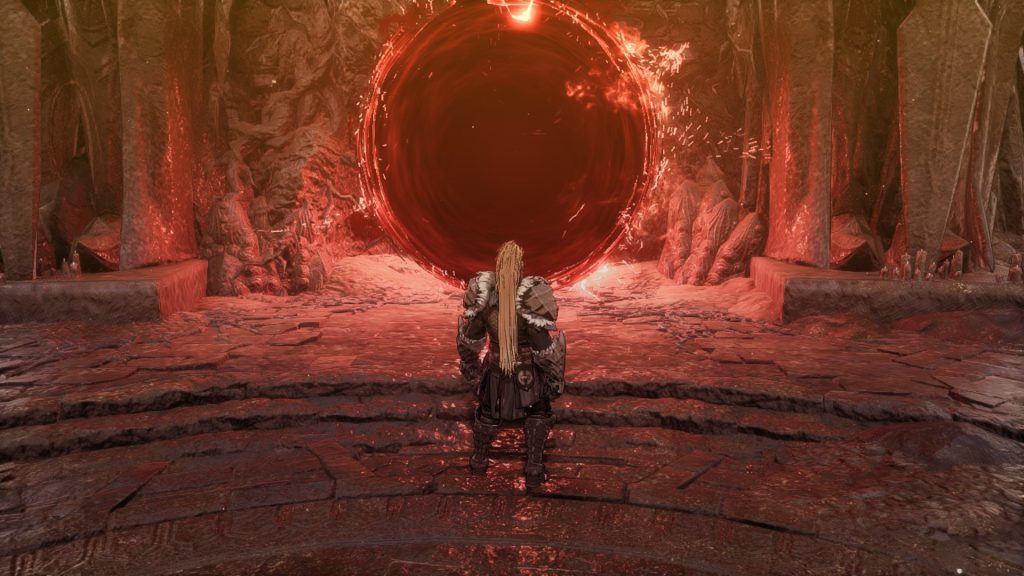
Enter Glowing Door
While traversing levels is fun, the real meat of the Khazan experience are the boss fights. I genuinely believe that this game’s suite of bosses is up there with the best the action genre has to offer. Going into too much detail would be a spoiler, but each of the game’s 16 main bosses was an incredibly rewarding, engaging, and fun experience to conquer. I died dozens of times to almost every single boss, and couldn’t stop myself from going back for more.
Something that differentiates Khazan is that many bosses have a sort of central mechanic that is relevant to mastering them, but not strictly necessary to win. These aren’t gimmick bosses, like Yhorm the Giant from Dark Souls III (who is trivialized by the Storm Ruler), but rather unique mechanics that add to the mental stack of things you need to juggle. Sometimes, this just means a status buildup that requires a consumable to clear, but it’s typically more involved, such as a boss that inflicts a unique debuff that stacks with every hit.
A common element I love about these bosses is that they often interact with the battlefield terrain. Bosses will bisect the arena with walls of fire or energy that box you in, mark the ground with traps that damage you if you walk over them, telegraph attacks with patterns on the floor, and more. It’s an element of boss design I feel has been quite overlooked in the Soulslike genre, and it was a blast to see a studio incorporate them as a consistent element throughout an entire game.
This game’s suite of bosses is up there with the best the action genre has to offer.
Yet another thing I love that Khazan does is that the more poorly you play, the stronger bosses can become. Debuffs will stack, increasing in severity; the more you get hit by certain attacks, the more powerful and aggressive a boss can become. Leave a boss alone for too long and they buff themselves, or heal. The way the bosses are designed will push you, and it is glorious. But to offset this, the developers have shown players a kindness: challenging a boss generates Lacrima proportional to how close you were to defeating them, so at some point your repeated failures will functionally catch you up in level if you ever approach an area underleveled, in addition to you learning their patterns.
The most glowing praise I can offer Khazan is this: Despite dying hundreds if not a thousand times, I almost never felt cheated or frustrated. Every death was my fault, a consequence of poor play, lost composure, or lack of skill, which made every victory even sweeter. Notably, many of the game’s side missions recycle main story bosses into slightly more manageable, lesser versions. While a part of me chafed at the lack of variety, I gradually came to see the genius in this concept. Khazan doesn’t let you get away with fluky victories; if you can do it once, you’ll have to prove you can do it twice. By the five-hour mark, I was starting to look forward to the repeat of a boss I’d just fought. Maybe it’s the Stockholm syndrome speaking, but I think I enjoyed the repeated fights as much as, if not more than, the originals.
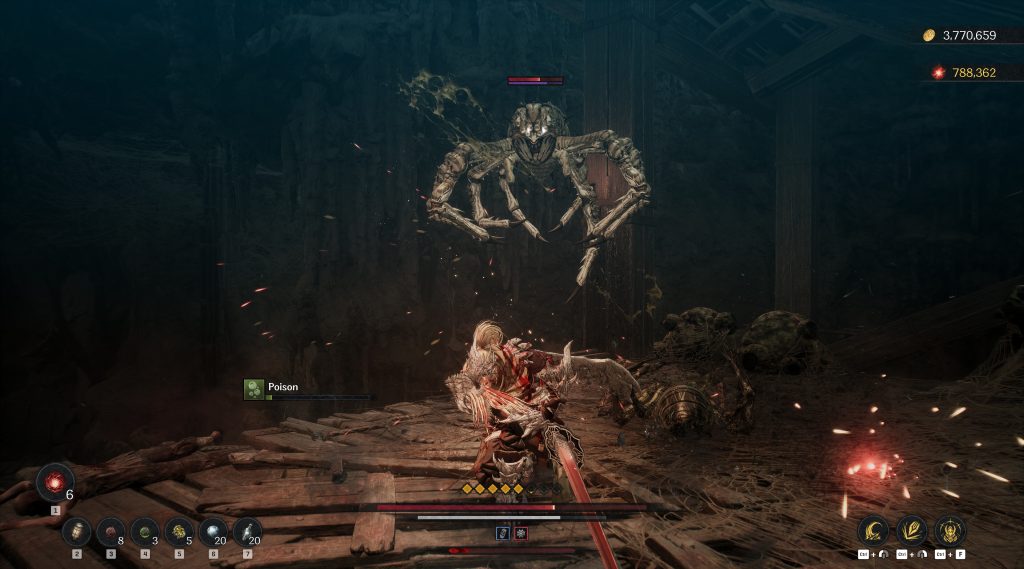
Cracks in the Armor
While the core system in The First Berserker: Khazan is excellent, there are a number of side systems that didn’t quite work for me.
Khazan has a fairly involved loot component, with the player accumulating hoards of gold, upgrade materials, consumables, weapons, and armor. Weapons and armor have a mixture of static and randomly generated traits, with additional tiered bonuses based on the number of items you have equipped from the same set. In New Game Plus, health pools increase significantly, and weapon and armor bonuses feel more notable, but for the most part, I spent my first playthrough equipping what looked good or had the highest attack or defense stat.
Certain armor sets notably have very fun bonuses when you have the full set, with many granting additional unique weapon skills or passives, but you can’t fully experiment with these until around 3/4s of the way through a first playthrough. To Khazan’s credit, you can find “crafting recipes” for each set in just one playthrough and can reroll the randomized attributes and traits on a weapon or armor piece for a pittance in gold, which is a lot more friendly than some other loot-focused games.
Khazan has three tiers of encumbrance based on the armor he equips, but I couldn’t really differentiate between the three at all. Compare this to, say, Dark Souls, where the differences in a light, medium, or heavy build are quite tangible, and this feels like a missed opportunity to make The First Berserker’s combat even more nuanced.

Khazan also has a bunch of netherworld spirit buddies, each of whom can be equipped and then upgraded. The bonuses here range from hard-to-notice numerical increases to bonuses that you could define your whole build and strategy around. This system was worthwhile, but there are some other systems here that seemed more complicated than they were worth. I didn’t realize until 40 hours in, for instance, that I could level up certain traits in the map menu of the Crevice, or that this game’s Fire Keeper equivalent (a blindfolded blonde woman of cryptic origin) provides a third level-up menu along with a branching upgrade tree. While I’m sure this buildcraft has relevance in NG+, I mostly handwaved all of this as the benefits seemed marginal compared to, well, actually learning how to fight a boss.
Overall, many of these systems presented such incremental, numerical increases (things like a 0.2% increase to health recovery) that I ended up not engaging with them, too focused on the core gameplay to care. Perhaps if I invested more in this area, I wouldn’t have faced such a stiff challenge, but the weapon skill tree felt like it provided more than enough buildcraft potential for me to sink my teeth into without micromanaging a bunch of percentage-based increases in the background. I also almost never used consumables, gold, or frankly 99% of my inventory; while I appreciate that these potentially open up avenues for alternate play styles, I mostly found it all to be bloat.
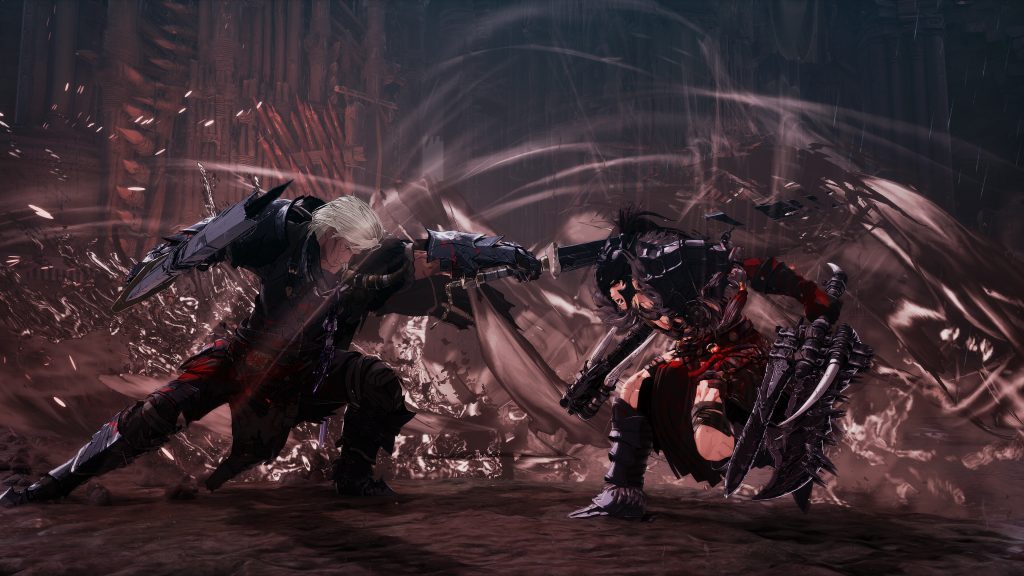
So This Game Does Have A Story, Apparently
We’ll continue the downward trend here: This story in Khazan is bad. It’s genuinely skippable. Play it to push buttons, not for any other reason.
Okay, I’ll Get Into It a Bit More
The story of this game isn’t entirely without the ability to engender pathos, but those moments are few and far between, and the plot suffers notably from some severe structural problems.
To give a short summary of the premise, Khazan, the great general, and Ozma, his best friend and a great mage, are betrayed by the Emperor and condemned, accused of treason. Through the early game, Khazan’s loyalty to his best friend is true, even as signs mount that Ozma may be the true mastermind behind the decay of the Pell Los Empire. Clearly, this relationship should be the central fulcrum around which the story revolves. It is not.
Khazan picks up a number of followers throughout the game. Every one of these followers has a fawning adoration for the former Great General. At points, the level of veneration veers into absurdity, especially when paired with the degree to which we are told of Khazan’s greatness and loyalty and ability to inspire, but never shown it. A flashback of Khazan and Ozma’s endeavors to defeat the great berserk dragon, Hismar, would have been a welcome storytelling device to flesh out the details. Instead, Khazan somehow accumulates a cadre of followers that feels largely unearned.
Ben Starr (Clive from Final Fantasy XVI) and Anthony Howell (Margit from Elden Ring) do their best to salvage the plot with their admirable performances as Khazan and his netherworld companion, the Blade Phantom, respectively, but they’re largely unable to. The relationship between Khazan and the Blade Phantom simply never takes off into anything meaningful.

Without getting into specific spoilers, the latter half of the story unveils a series of reveals that range from obvious to “really would have helped to not obfuscate this information up until this point.”
While the primary narrative isn’t competently told, there are flashes of potential throughout. The side missions typically end with a storybook-styled animatic vignette, some of which do manage to tug at the heartstrings. The writers here aren’t incapable of putting forth some good work, but clearly excelled in the micro-situations and weren’t able to craft a fully engaging narrative.
The animatics, on the other hand, were beautiful. I found myself taken with the aesthetic and believe a series of flashbacks centering around our central protagonist and antagonist narrated in this manner could have elevated the overall experience considerably.
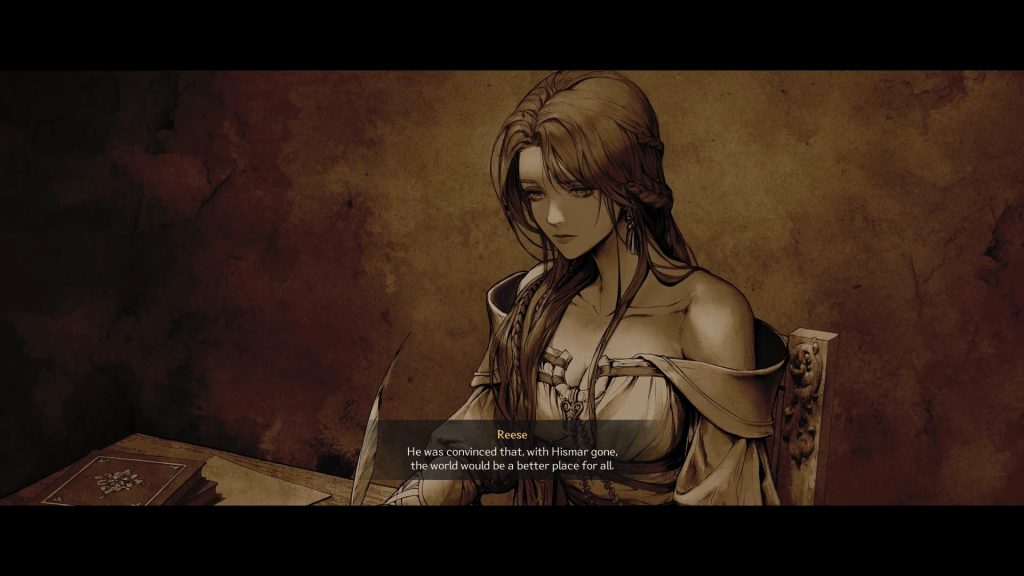
Final Thoughts
In the end, what is The First Berserker: Khazan? It’s a deeply rewarding and engaging experience, if challenging a boss 50 times in a row sounds fun to you. The story is a huge miss, the characters are boring, and the setting is all of the drab of Dark Souls with none of the wonder, but the peaks here are incredible, and if you can endure the journey, Khazan is an awesome, awesome experience.
Score: 9.0 / 10
The First Berserker: Khazan, developed by Neople and published by NEXON, is available now on PC, PlayStation 5, and Xbox Series X/S. MSRP: $59.99. Version reviewed: PC.
Disclaimer: A review code was provided by the publisher.
Miscellaneous Notes
- Khazan is very similar to Nioh 2. Both games share the same map-based main mission structure + remixed map, repeated bosses side structure. Both have a near-identical loot system as well (they even share a similar “demon form” mechanic).
- Nioh 2’s combat system has more depth, with a larger number of weapon categories and a more complex, input-heavy move list. Khazan sticks to trigger + face button inputs, while Nioh 2 has more button sequences or stick movement + button type inputs.
- The Ki Pulse mechanic from Nioh 2 also remains unparalleled; nothing like that exists here. Yokai Shift and skills, plus the larger weapon pool and status buildup possibilities, mean Nioh 2 has a hugely improved buildcraft pool compared to Khazan.
- Where Khazan does outshine Nioh 2, though, is in the enemy and boss department. They’re just so well-designed and uniquely challenging while being minimally frustrating.
- Some of these bosses feel really chunky at first. Don’t be discouraged. You’ll be melting them down in no time.
- The last 10 bosses of this game were a truly generational run of all-time boss fights for me.
- Points you invest in weapon skill trees are redistributable for free at any time, and redistributing your levels is also functionally free. It might seem like a lot, but I really would recommend trying each weapon category equally. They’re all very satisfying in their own way, even if you end up honing in on one.
- The soundtrack is available on Spotify, and it’s pretty good. Some catchy tunes, especially for the bosses, which is a good thing because you’ll be hearing them a lot.
- A number of lore descriptions were also solidly written, though the “haunting item description as lore” thing has permeated video games to the point where I sometimes can’t tell if a description comes across as genuine or farcical.
- The side missions tend to delve into stories that generally don’t have anything to do with Khazan. These quests have significantly improved writing compared to the main game, which essentially means you have to go out of your way to get anything interesting out of Khazan’s world, lore, story, or characters.
- This game has an incredible perfect parry sound effect. I’m not sure if anything will ever top Sekiro’s sword clash, but the thoom effect of a counterattack is immensely satisfying.
- Khazan’s greatsword is my favorite greatsword in gaming. An absolute beast of a weapon.
Huge video game, comic book, and anime fan. Spends way too much time watching things he doesn’t like. Hates Zack Snyder. Mains Falco.


